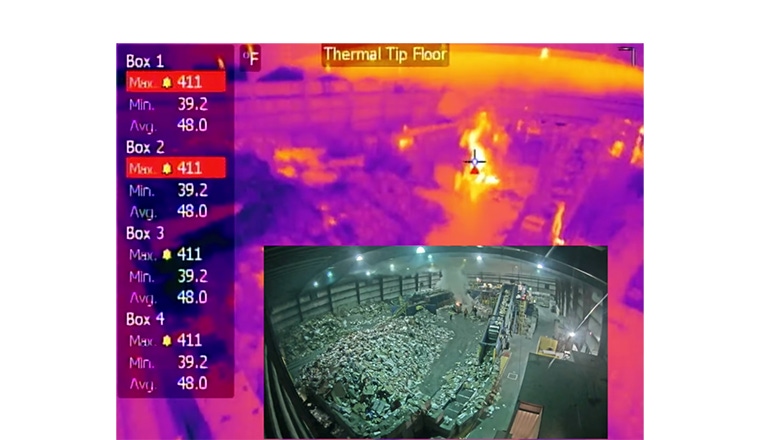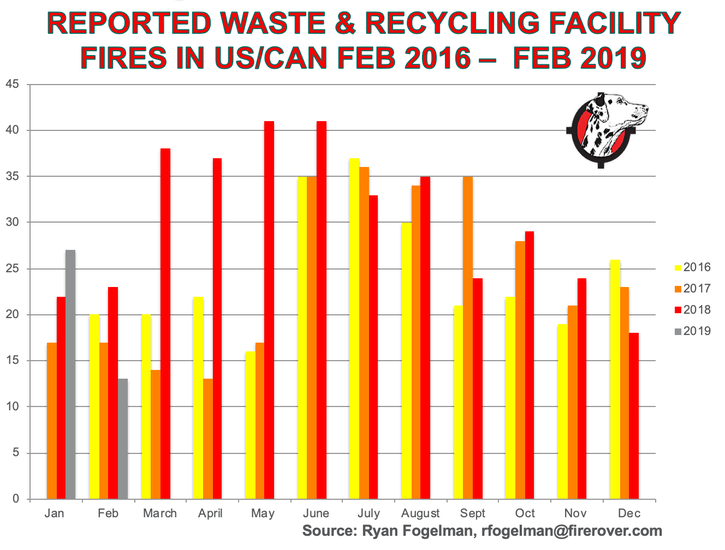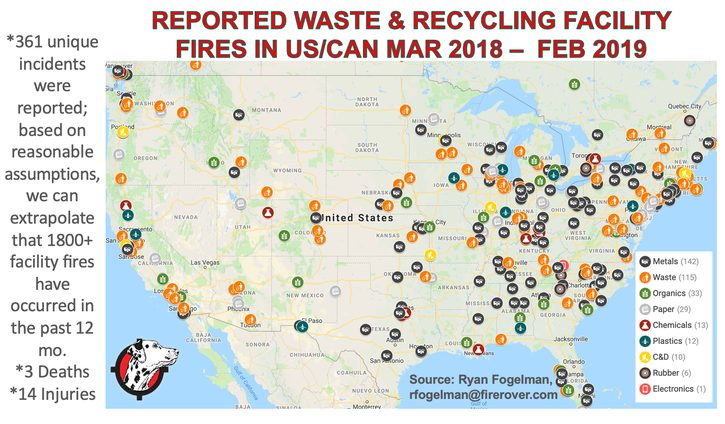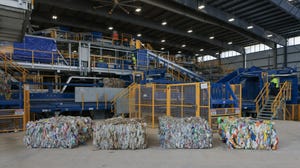February 2019 Waste, Recycling Facility Fire Incidents Lowest Since April 2017
This is an interesting time to reflect on the positive changes the waste and recycling industry has implemented since industrywide focus on fires has grown.

During the past 12 months, the waste and recycling industry has experienced 361 reported facility fires in both the U.S. and Canada. Based on reasonable assumptions, we can extrapolate that 1800-plus facility fires have occurred during that time, which, based on the number of facilities reported by the Environmental Research & Education Foundation (EREF), is more than 40 percent of the industry.
There were also three deaths and 14 injuries reported during that time. Most of these injuries are suffered by the brave fire professionals called in to fight and contain these incidents.

After coming off a January high of 27 facility fires, we experienced only 13 reported fire incidents in February. Last February, we experienced 23 reported fire incidents, so this is a significant decline anyway you look at it. We haven’t seen a month with fire incidents this low since we experienced the same number in April 2017. Although this is great news, and we are all hopeful this is a trend that will continue, it is an interesting time to reflect on the positive changes the waste and recycling industry has implemented since the focus on fires in the industry has grown. The good news is that waste and recycling companies, both large and small, are developing fire plans, educating their employees and investing in the newest technology to combat the increase in fire risks we face as an industry.

Since joining the Fire Rover team in 2015, I have been extremely fortunate to work with fire professionals with a wide variety of expertise and industry experience. One of those colleagues, Dr. Chris Cloney and I launched our respective fire incident databases at the same time—his focused on combustible dust fire incidents and mine on waste and recycling fire incidents. Cloney earned his doctorate degree researching dust, gas and hybrid mixture explosions and has built a global community around awareness and education of combustible dust.
I was recently Cloney’s guest on his “Dust Safety Science” podcast discussing the hazards we face in the waste and recycling industry. From the incident research consolidated by Cloney over the last three years, his findings show that dust collectors are the largest source of fire and explosion incidents; he also mentions that other equipment such as conveyers, storage silos and mixers are important potential hazards to consider. Cloney shared an example of a metal dust fire and explosion that occurred at a titanium and zirconium scrap recycling facility in 2014.
“According to the U.S. Chemical Safety and Hazards Investigation Board, the explosion originated in a mechanical blender and injured four workers; three of them fatally (CSB, 2014),” he said. “In their conclusion and recommendations, the CSB suggested that any facilities that generate dust during their processing operation follow the engineering guidance given by applicable standards such as NFPA 484: Standard for Combustible Metals to avoid fires and explosions. In particular, Chapter 14: Guidelines for Combustible Metal Recycling Facilities may be important to consider. For dusts generated in recycling of plastics, paper and cardboard, other guidelines such as those in NFPA 652–Standard on the Fundamentals of Combustible Dust should be consulted.”
Most of the fire hazards we typically see in the waste and recycling industry range from traditional material hazards, such as pressurized tanks, chemicals, hot work activities, hazmat and smoking to newer hazards like lithium-ion batteries.
At Fire Rover, we typically see “smoldering fires” in our clients’ installations or fires that build gradually until they are suppressed. We are fortunate to experience fewer explosive fires than other industries, but as Chris mentioned, combustible dust is a hazard that needs to be planned for at our waste and recycling facilities. This is especially with certain scrap metal recycling, rubber, chemical and hazard material recycling.
If you are interested in listening to the podcast, you can do so from The Dust Safety Science website (DSS014: Fire Hazards in Waste and Recycling Facilities with Ryan Fogelman) or directly from Apple iTunes.
I hope we all can agree, that whether we have a good month or a bad month in terms of fire incidents, our job of protecting and mitigating risk at our facilities is paramount for public safety, employee safety and business continuity.
Ryan Fogelman, JD/MBA, is vice president of strategic partnerships for Fire Rover. He is focused on bringing innovative safety solutions to market. He has been compiling and publishing the “The Reported Waste & Recycling Facility Fire In The US/CAN” since February 2016 and the “Waste & Recycling Facility Fire Annual Report.” Fogelman speaks regularly on the topic of the scope of fire problems facing the waste and recycling industries, detection solutions, proper fire planning and early-stage fire risk mitigation
About the Author(s)
You May Also Like




